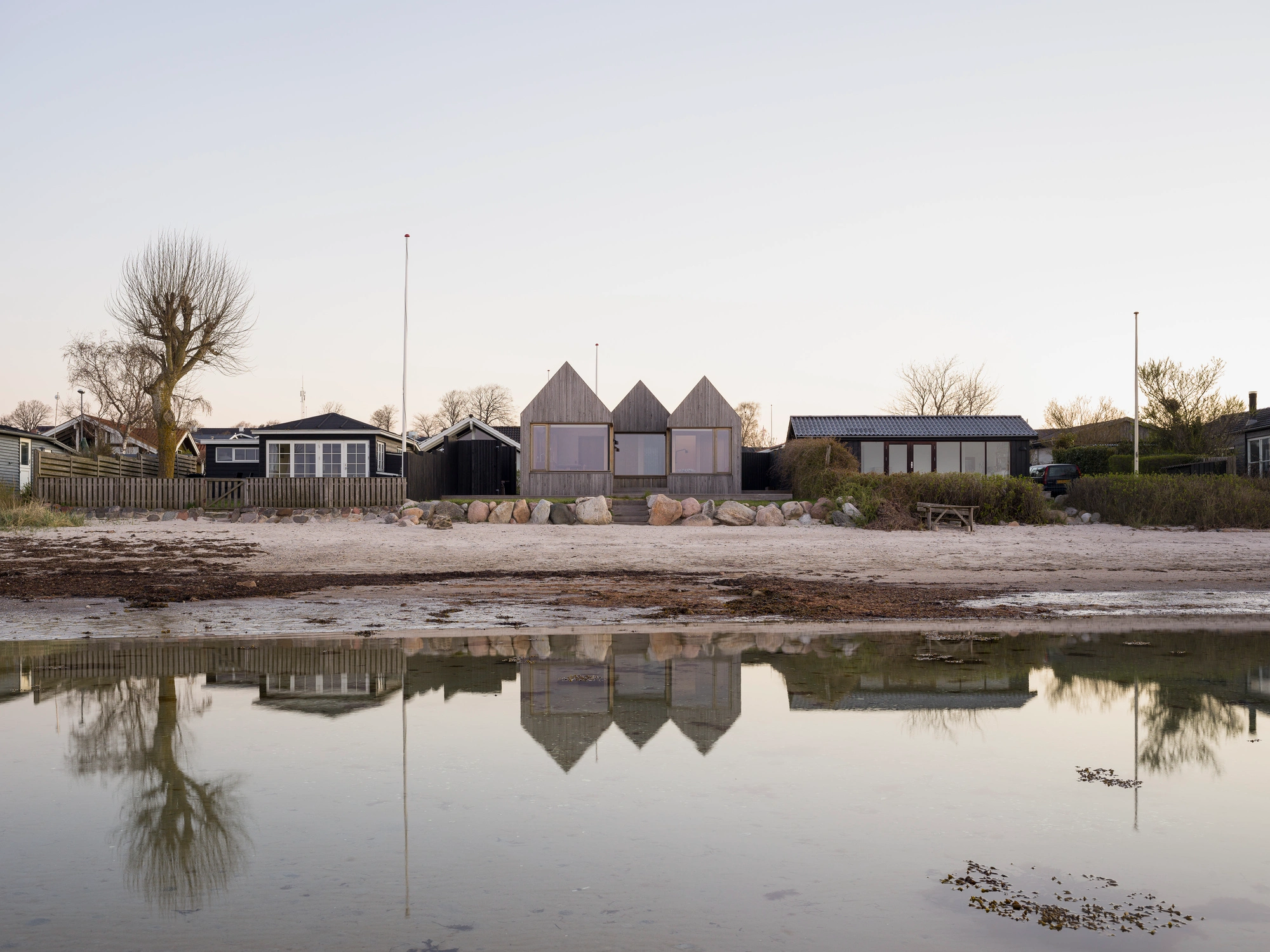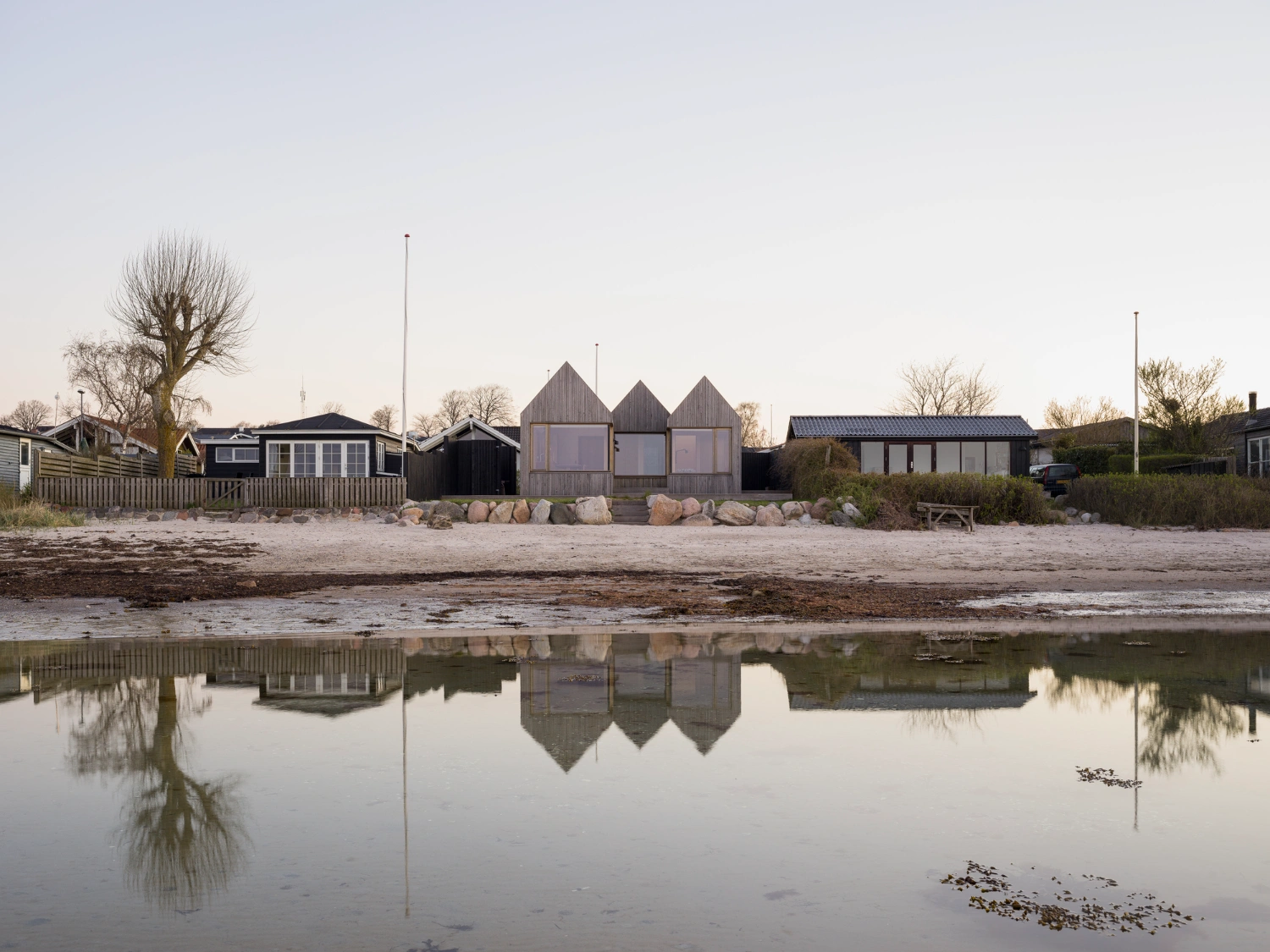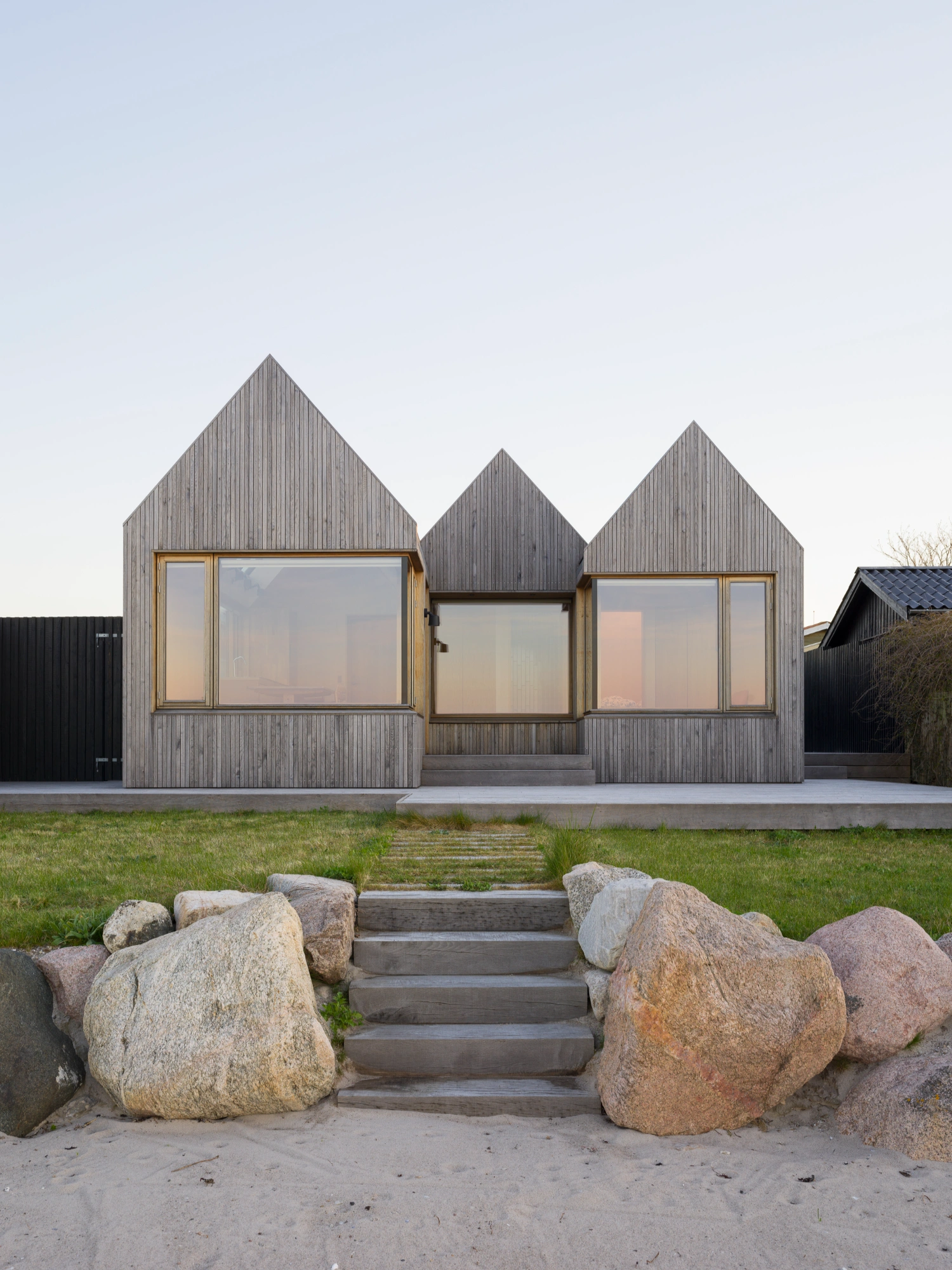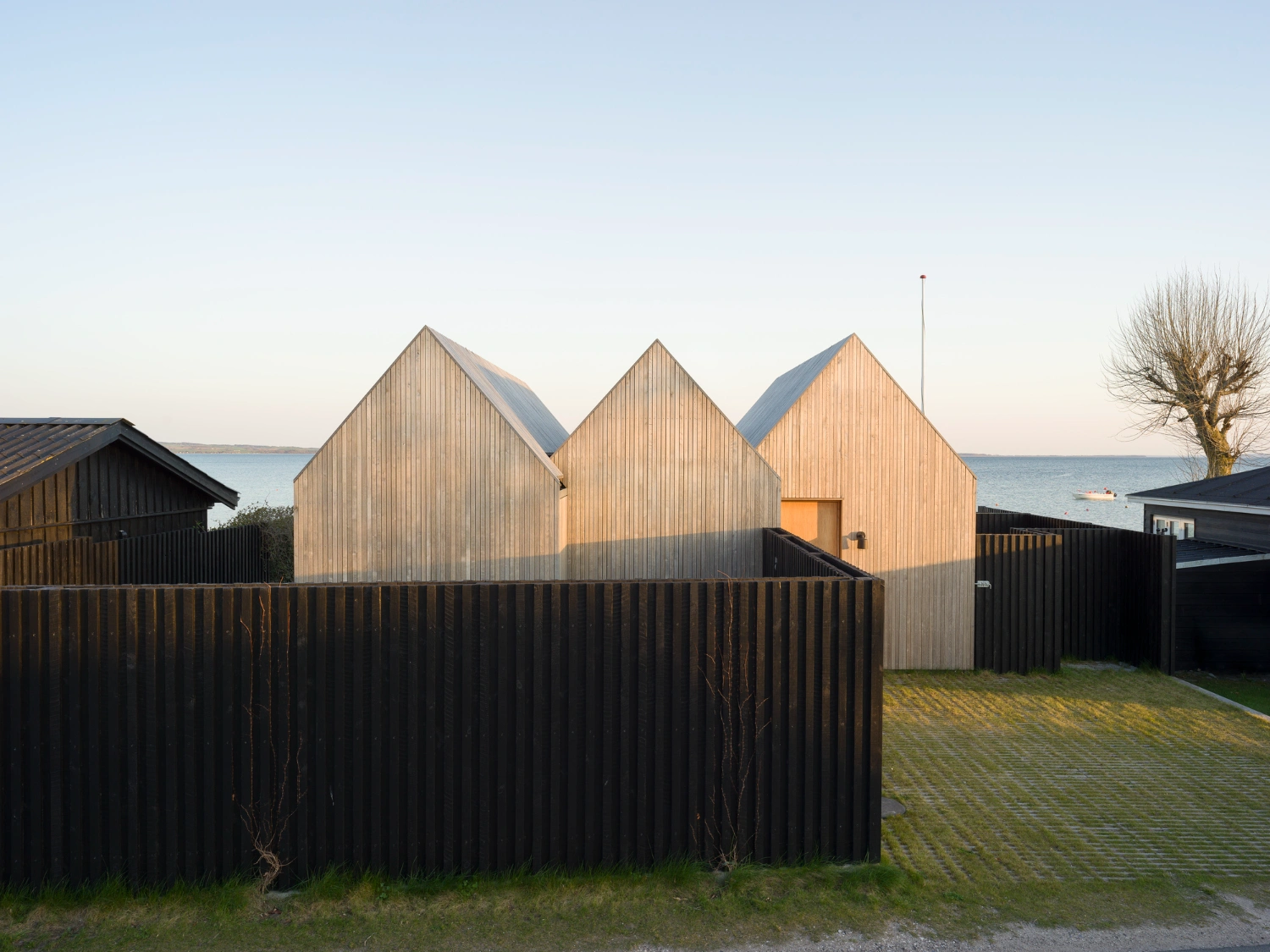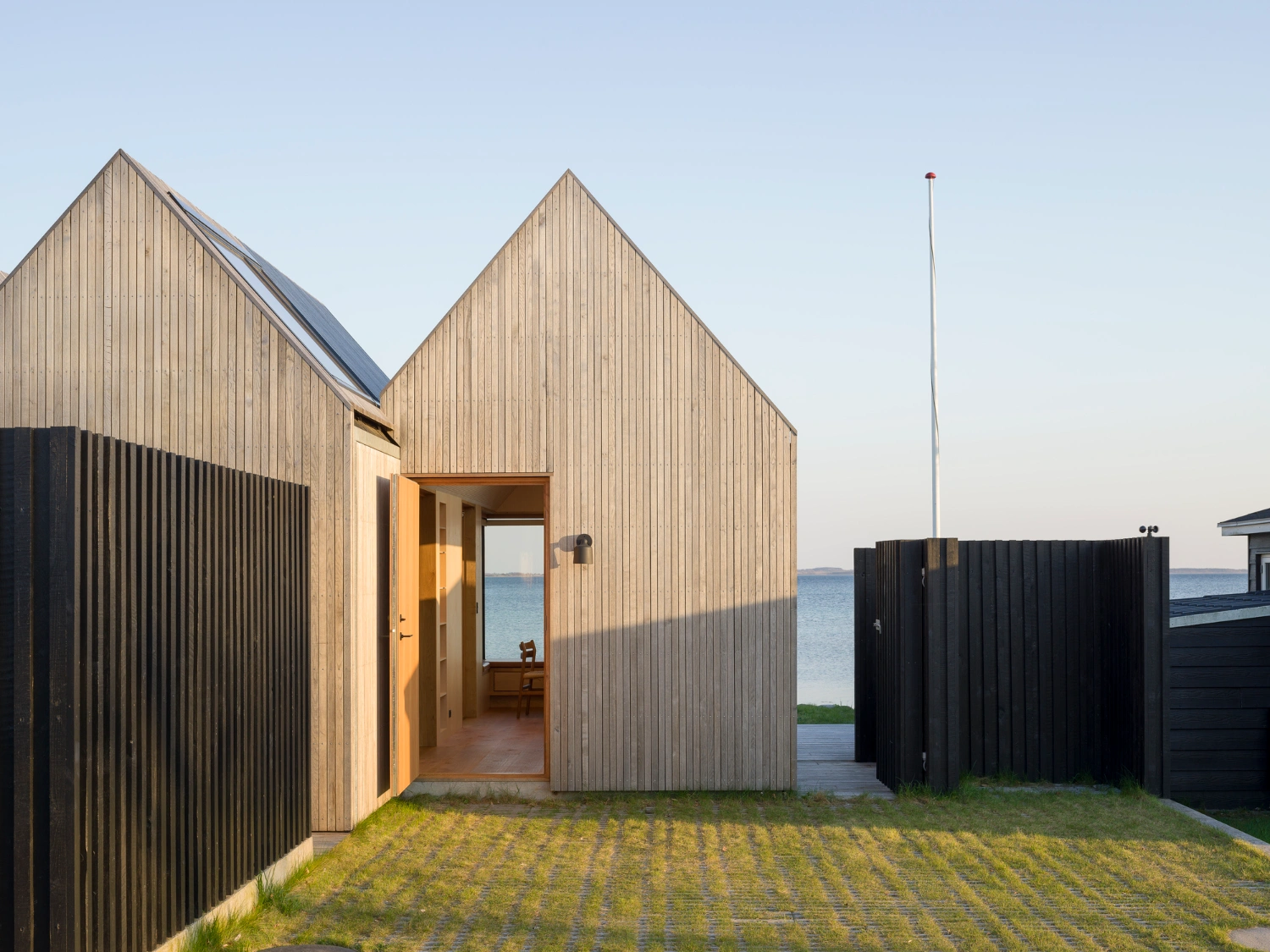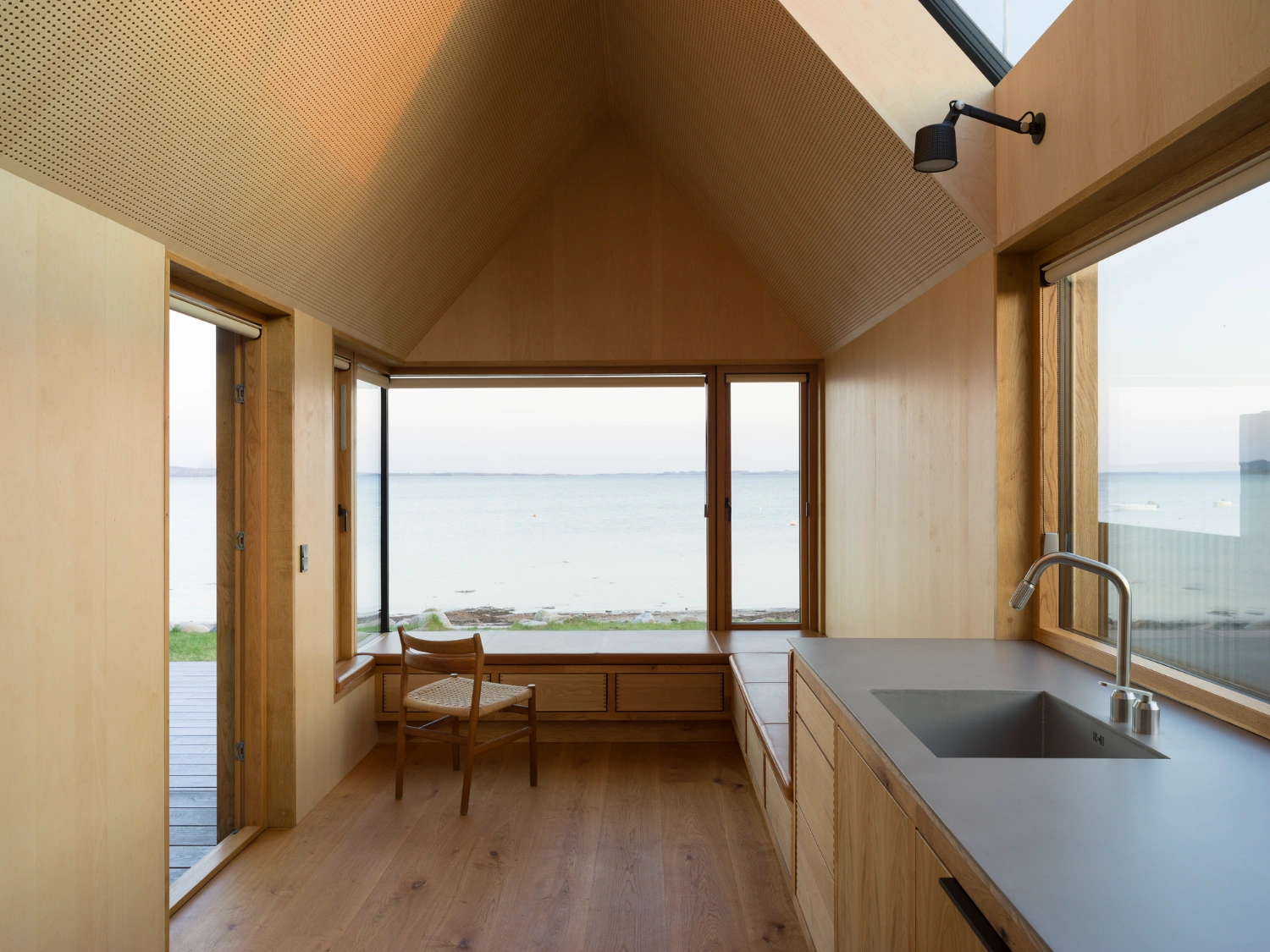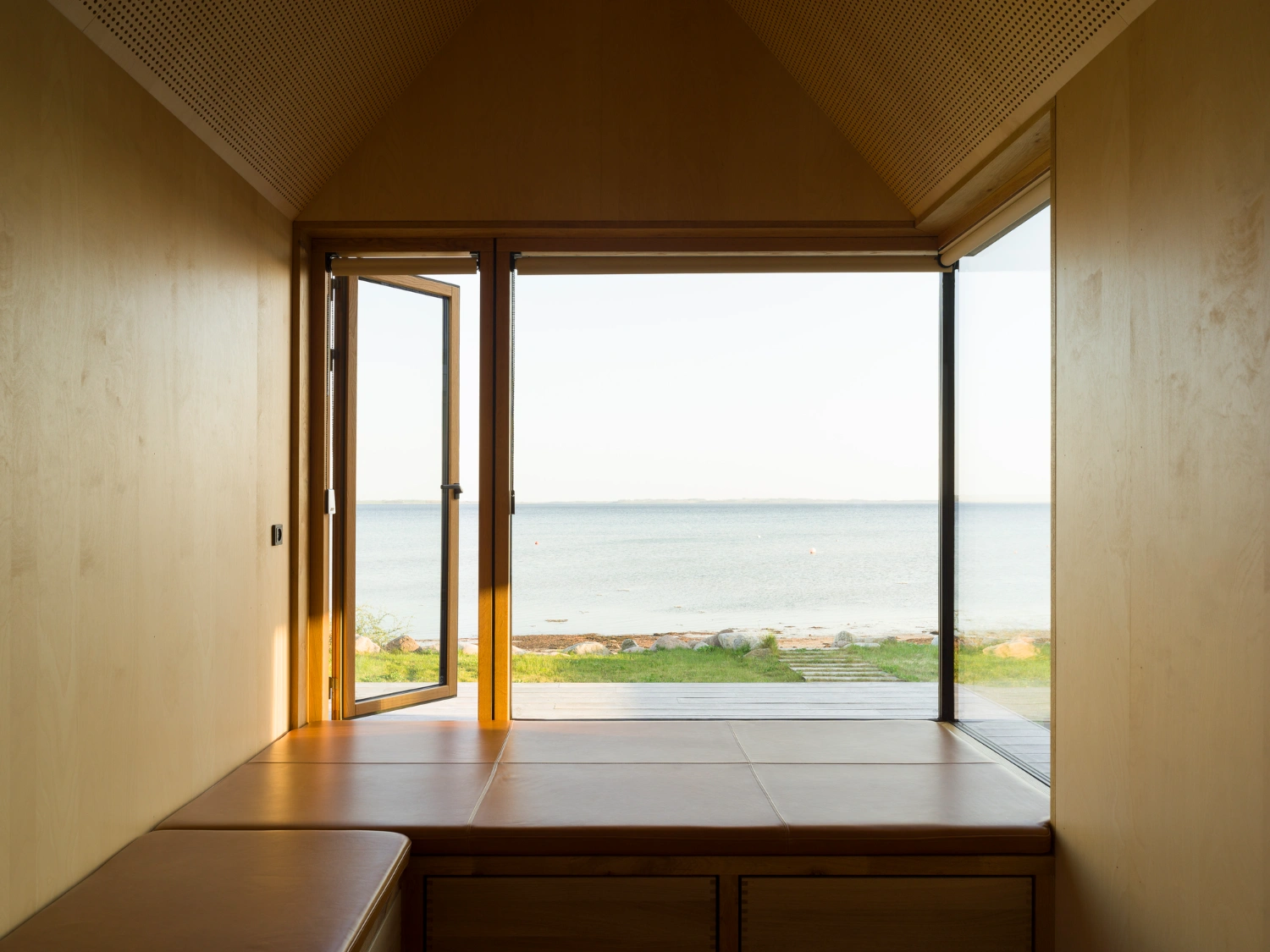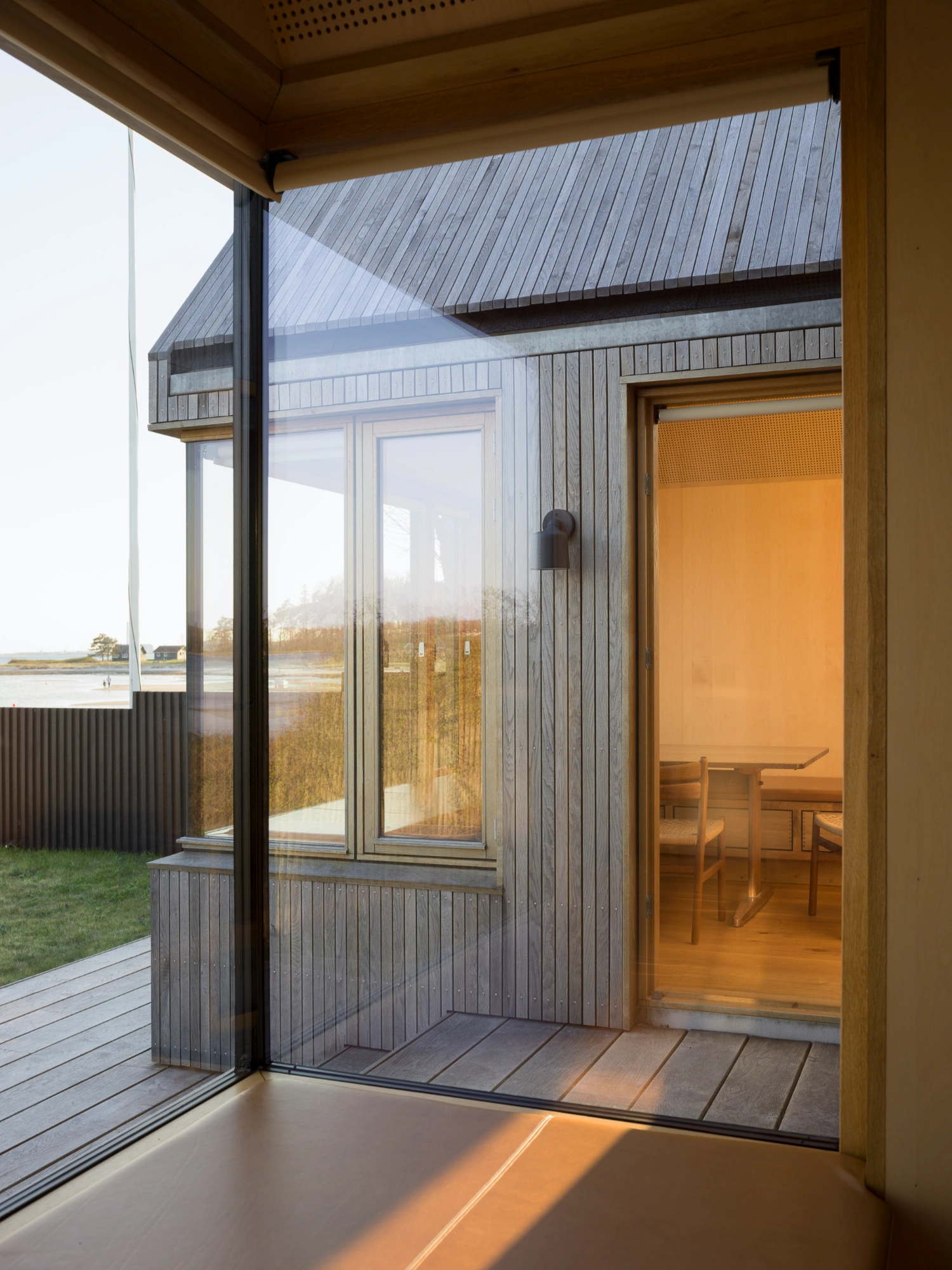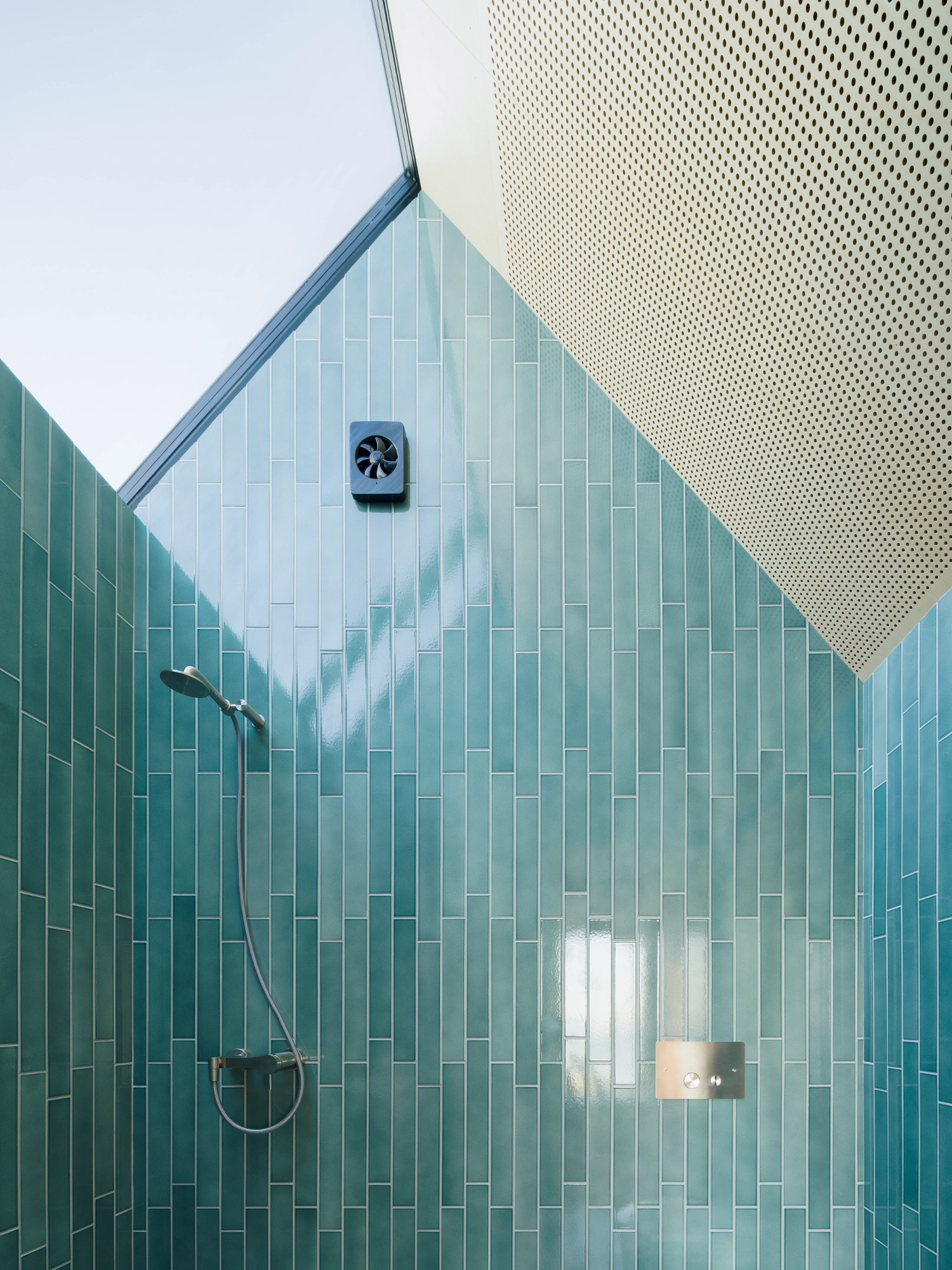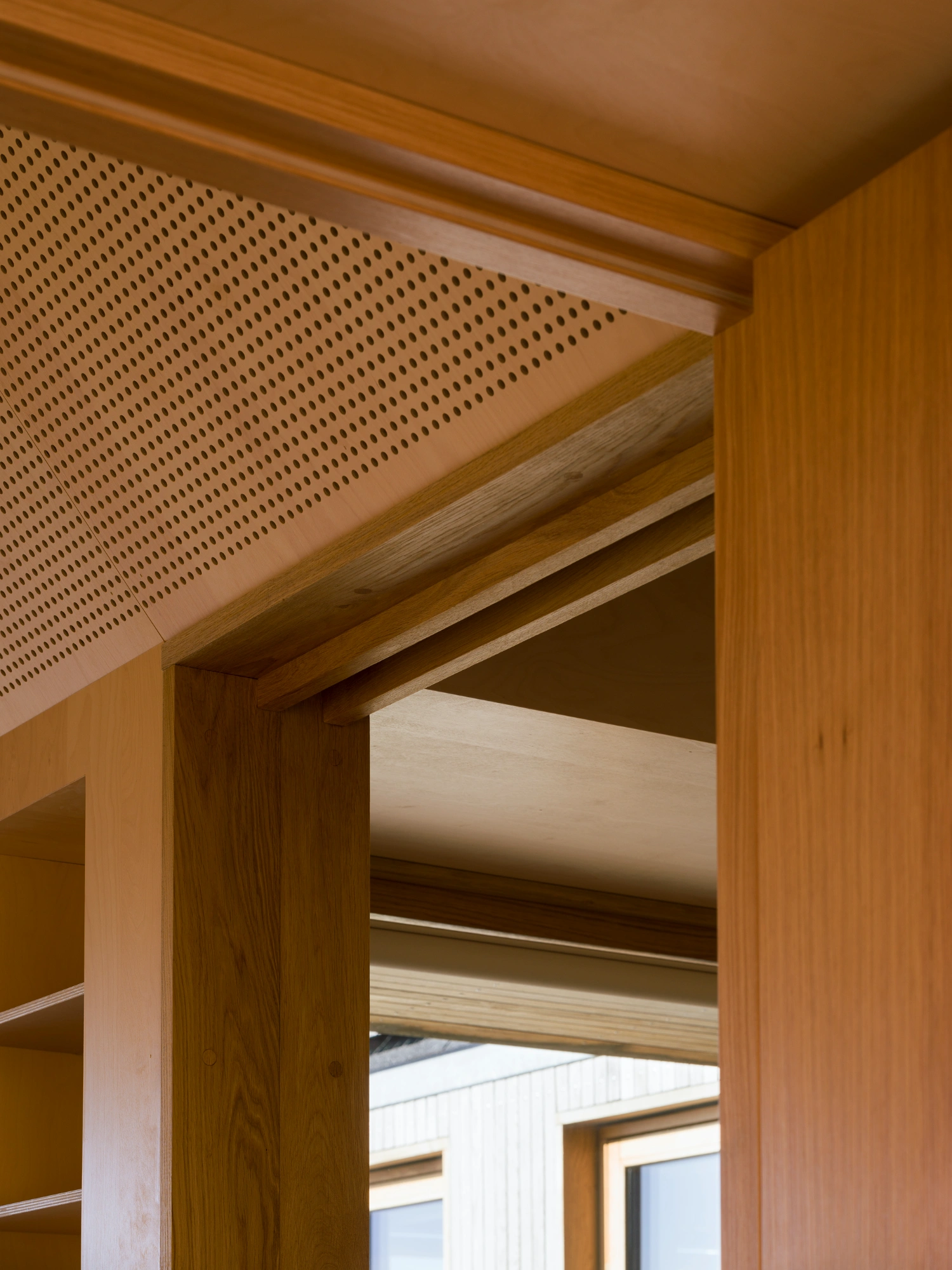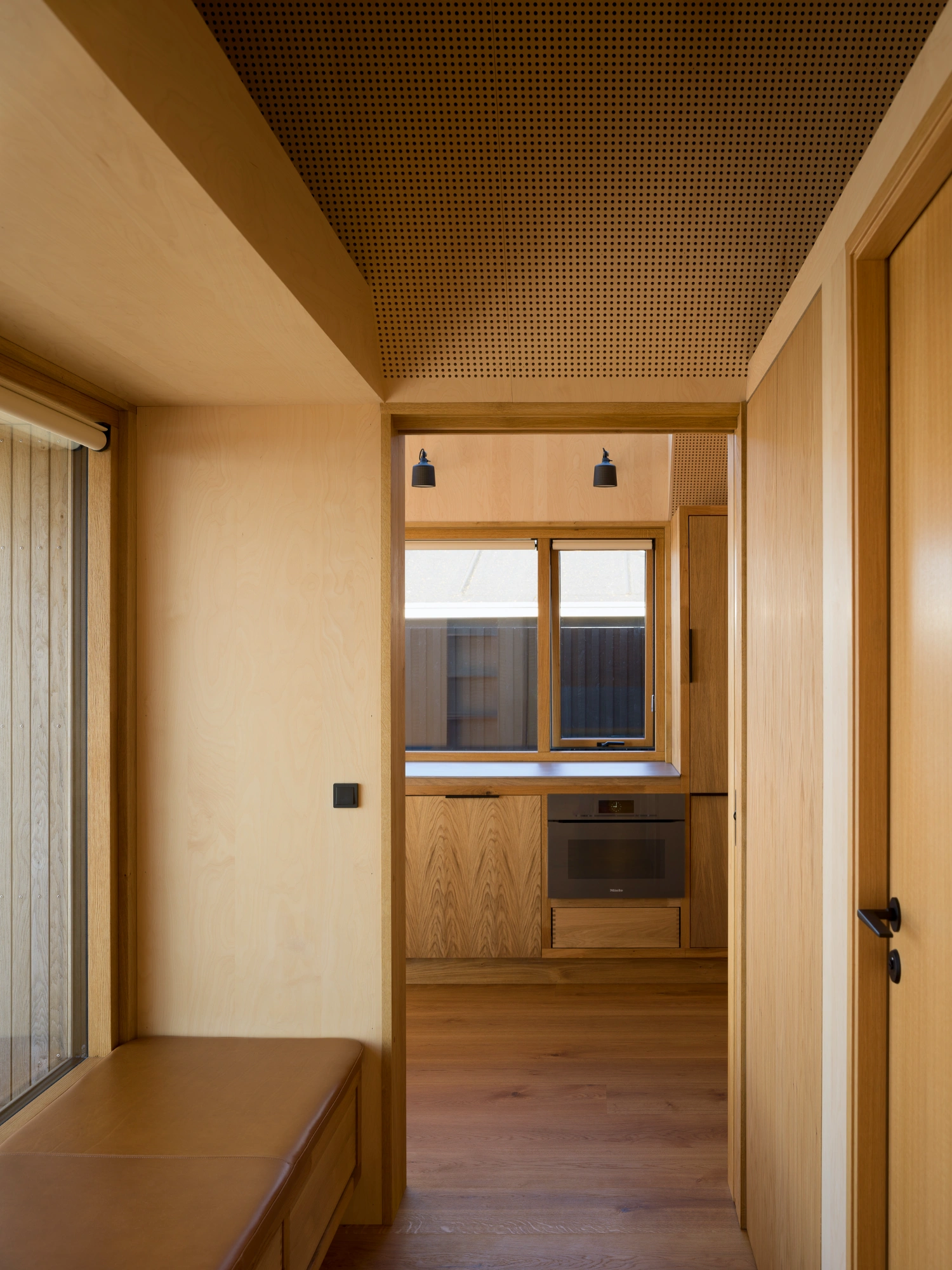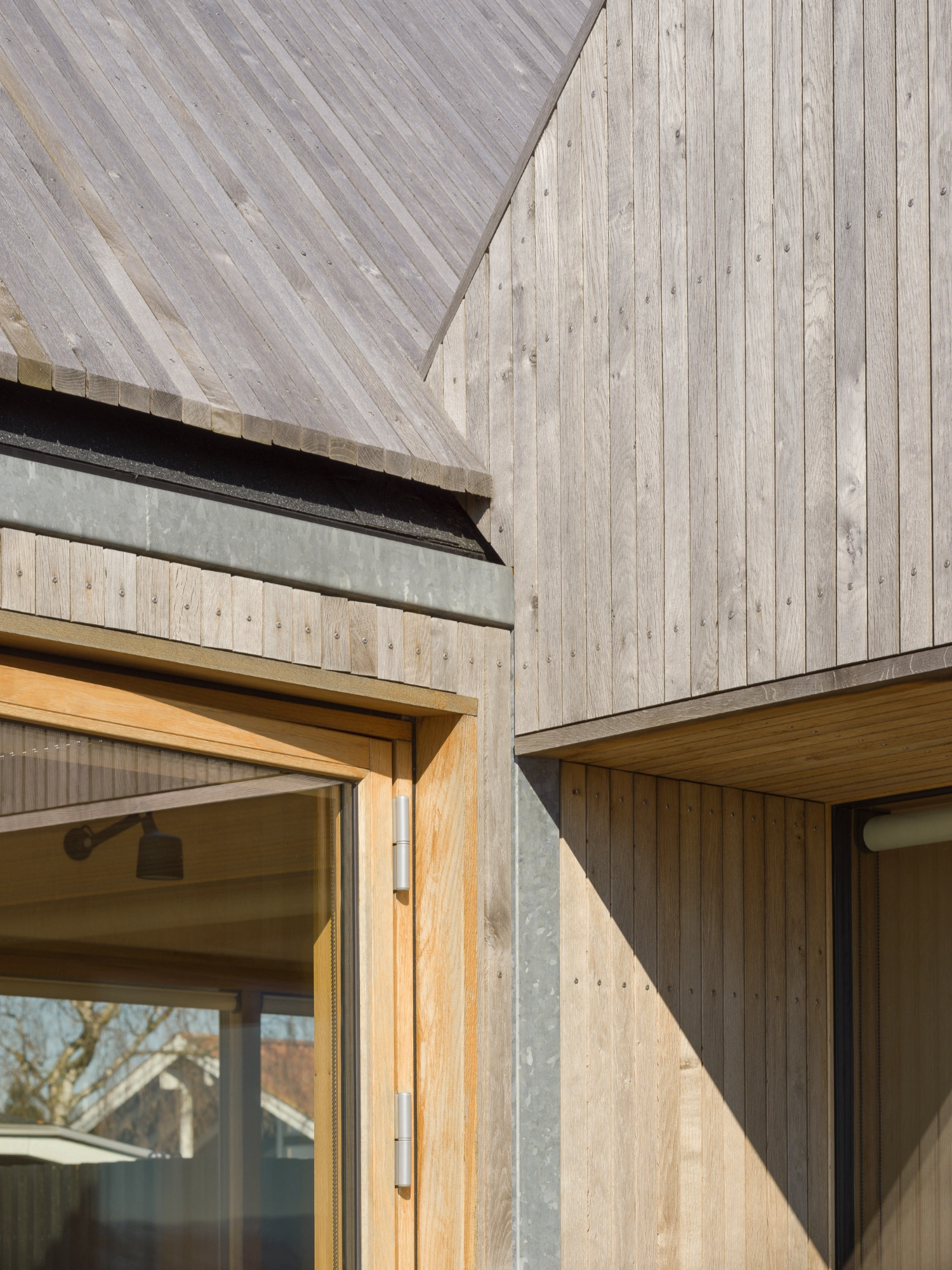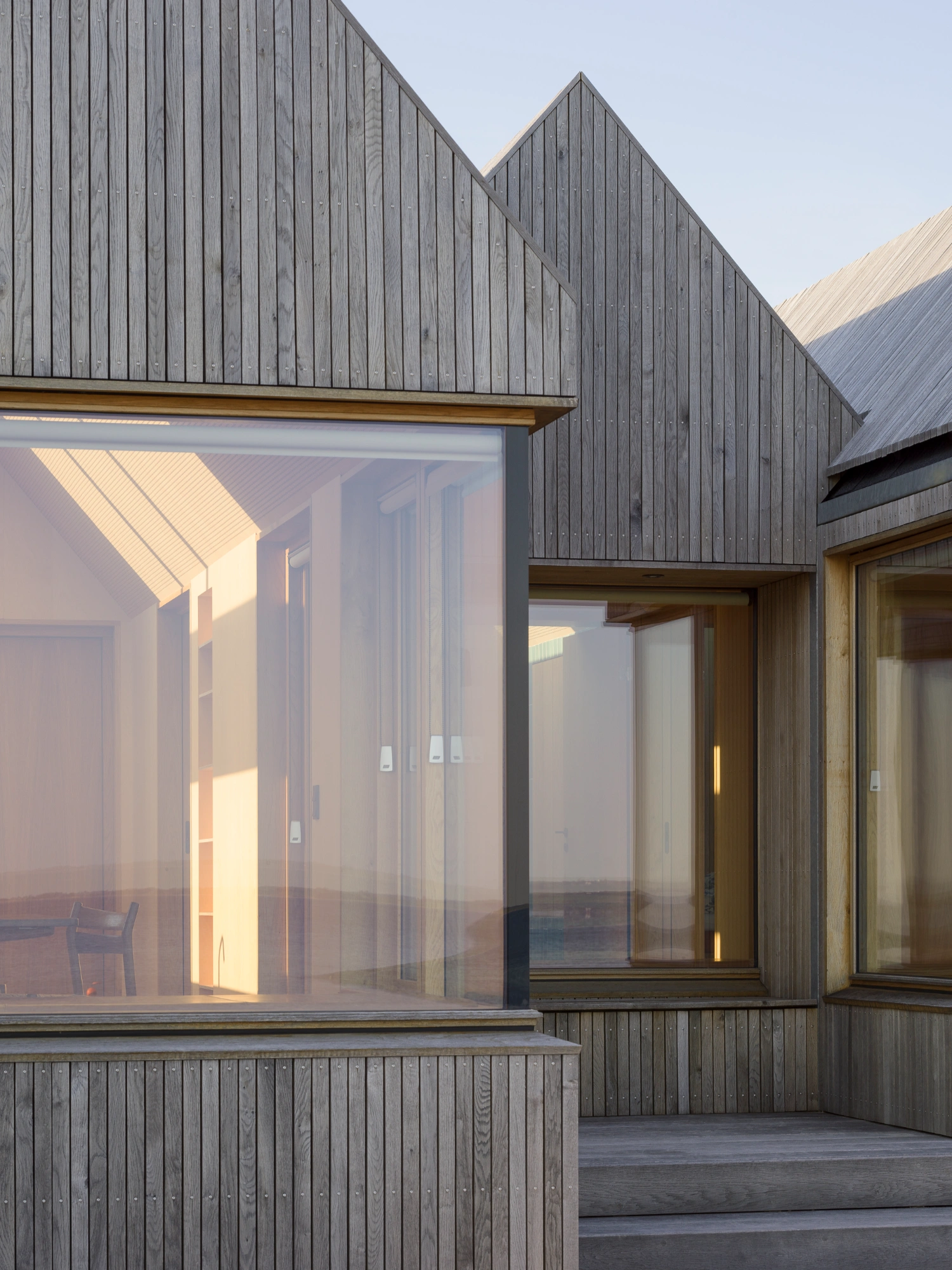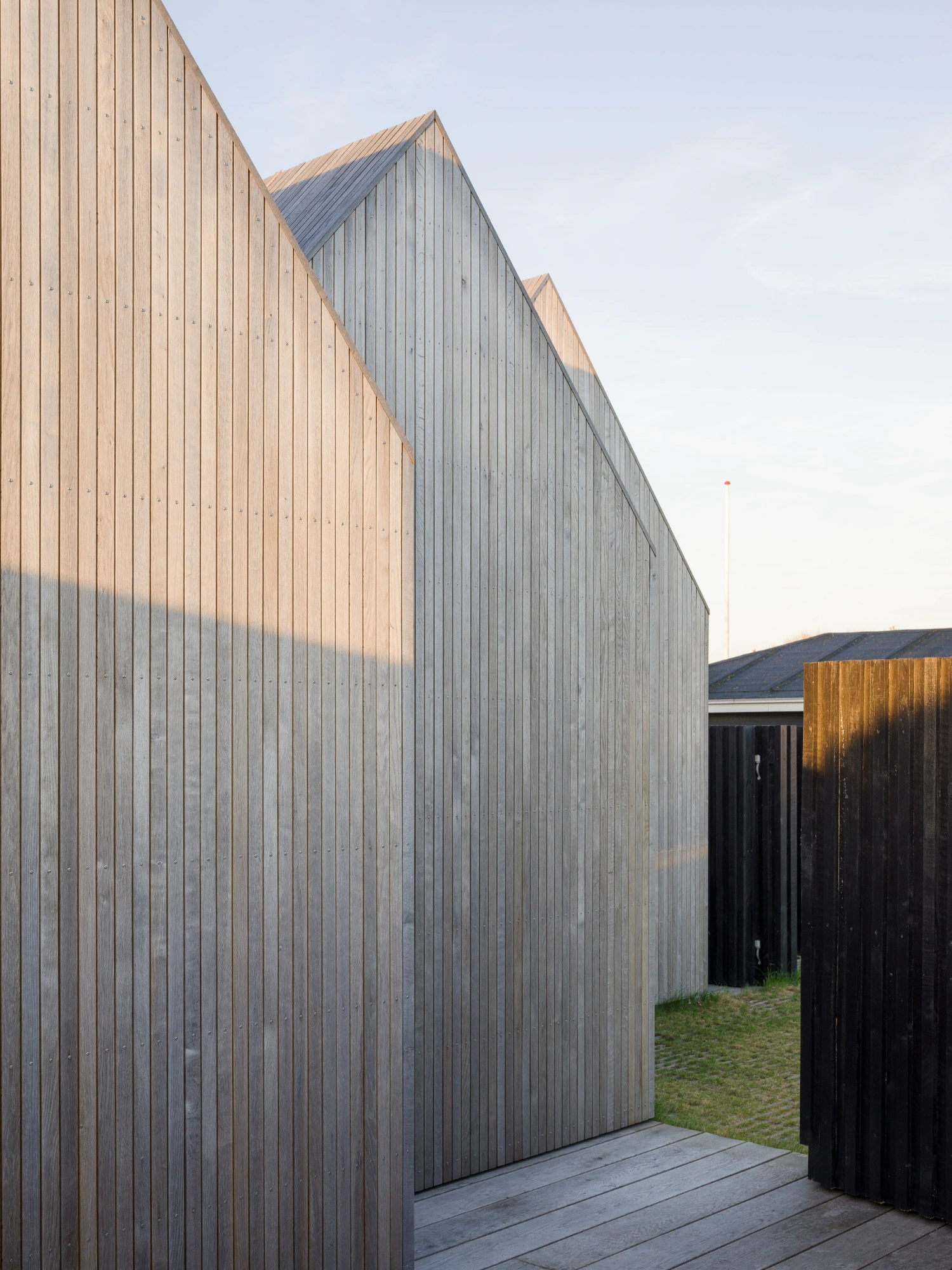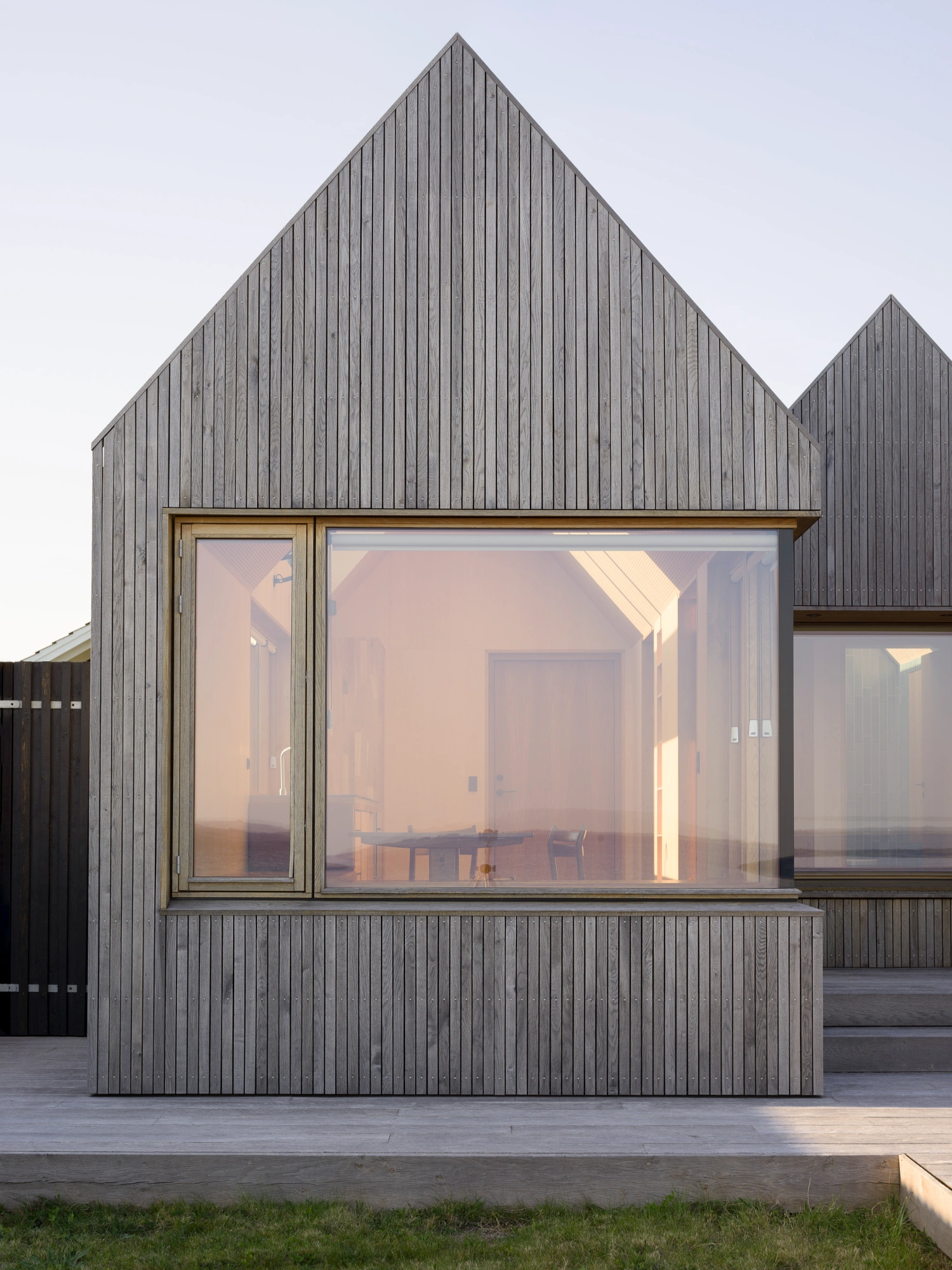Strandvejen 35, perched delicately on Denmark’s Følle Strand, is more than a summer retreat—it’s a case study in architectural restraint and ecological responsibility. Designed by Jesper Kusk Arkitekter, the compact 46-square-meter house is a reimagining of the area's historic fisherman’s dwellings.
Three gabled volumes—reminiscent of traditional Scandinavian vernacular—sit aligned along the bay of Kalø, their modest presence camouflaged by locally sourced Danish oak façades. There is a poetry to their arrangement: a choreography of form that quietly converses with the landscape rather than imposing upon it.
This is architecture driven by constraint, where spatial limitations become the impetus for invention. The house hosts up to seven guests, a feat of compact design that leans on fluid thresholds, sliding partitions, and layered spatial sequences. Here, hallways aren't merely connective tissue but social arenas; windowsills double as seats, and zones gently shift between private and communal. Rather than enforce a rigid domestic order, the plan permits variation and quiet moments of solitude—essential qualities for any meaningful retreat.
What truly elevates the design is its attentiveness to light and atmosphere. The architecture doesn't just admit daylight—it stages it. Skylights punctuate the roofs with intent, carving soft shafts of light that animate the interiors over time. High ceilings counteract the compressed floor plan, giving the rooms a surprising generosity of volume. Meanwhile, large glazed openings frame Kalø Bay as a living mural, pulling the landscape into the home and tethering the architecture to its natural context, even during Denmark’s more weathered seasons.
Materially, Strandvejen 35 speaks the language of tactility and ethics. The exclusive use of wood—renewable, warm, and intimately scaled—gives the house a calm coherence. The decision to clad both roof and façades in Danish oak roots the project in its geography, but also in a long-standing Nordic sensibility of simplicity and craftsmanship. A Life Cycle Assessment (LCA) conducted by Artelia reports a CO2 emission of just 6.7 kg CO2-e/m²/year, placing it in Denmark’s voluntary low-emission construction category—a subtle yet vital gesture toward future-forward building practices.
Perhaps most remarkably, Jesper Kusk Arkitekter manages to make the minuscule feel monumental—not through grandeur, but through exactitude, sensitivity, and a belief in architecture’s responsibility to both inhabit and respect place.

